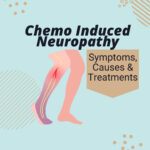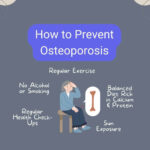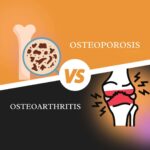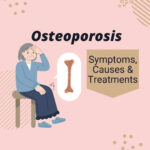Osteoporosis, a condition characterized by the weakening of bones, is a silent threat that affects millions of people worldwide. As bones lose their strength and density, individuals with osteoporosis are at a higher risk of fractures and other bone-related problems. This condition can significantly impact one’s quality of life, causing pain, mobility issues, and even leading to disability in severe cases.
By understanding the causes, risks, and available support for osteoporosis management, individuals can take proactive steps towards preserving their bone health and preventing further deterioration.

What Is Osteoporosis?
Osteoporosis is a condition that weakens bones and increases the risk of fractures. It affects bone density and structure, making bones more fragile and prone to breaking.
Osteoporosis Weakens Bones and Increases Fracture Risk
Osteoporosis is a disease that causes bones to become weak and brittle. When someone has osteoporosis, their bones are more likely to break even from minor falls or accidents. This can lead to fractures in different parts of the body, such as the hip, spine, or wrist.
How Osteoporosis Affects Bone Density and Structure
In people with osteoporosis, bone density decreases significantly. Bone density refers to how much bone mass there is in a certain volume of bone tissue. With osteoporosis, there is less bone mass overall, which makes the bones weaker and more susceptible to fractures.
Not only does osteoporosis cause bone loss, but it also affects the structure of the bones themselves. In healthy bones, there is a balance between old bone being broken down by cells called osteoclasts and new bone being formed by cells called osteoblasts. However, in osteoporotic bones, this balance is disrupted. The rate at which old bone is broken down exceeds the rate at which new bone is formed. As a result, the bones become thinner and more porous, increasing the risk of fractures.
The Role of Hormones in Maintaining Healthy Bones
Hormones play an essential role in maintaining healthy bones throughout our lives. Estrogen is particularly important for women because it helps protect against bone loss. During menopause, when estrogen levels decline significantly, women are at higher risk of developing osteoporosis.
Similarly, testosterone plays a crucial role in men’s bone health. Low levels of testosterone can contribute to bone loss and increase the risk of osteoporosis. Hormones such as parathyroid hormone and vitamin D work together to regulate calcium levels in the body, which is essential for maintaining strong bones.
Osteoporosis Symptoms
Identifying common signs of osteoporosis
Recognizing the symptoms of osteoporosis is crucial for early diagnosis and treatment. While osteoporosis is often referred to as a “silent disease” because it doesn’t cause noticeable symptoms in the early stages, there are some signs that individuals can look out for.
One common symptom of osteoporosis is bone pain or tenderness. People with this condition may experience pain in their bones, particularly in the back, hips, or wrists. This pain can be persistent or intermittent and may worsen with movement or pressure on the affected area.
Another sign to watch for is fractures that occur more easily than expected. Osteoporotic bones are fragile and prone to breaking even from minor falls or accidents. Fractures commonly occur in the spine, hips, and wrists. If you notice that you’re experiencing fractures more frequently than before, it’s essential to consult a healthcare professional.
The link between back pain and potential fractures
Back pain can be an indicator of potential fractures caused by osteoporosis. As the condition progresses, weakened bones in the spine can lead to compression fractures. These fractures can cause severe back pain that may radiate down into the legs.
If you have been experiencing persistent back pain without any apparent cause, it’s important not to ignore it. Consulting a healthcare provider will help determine if your back pain could be related to osteoporotic fractures.
Height loss as a possible indicator of osteoporosis
Height loss can also serve as a possible indicator of osteoporosis. As we age, it’s normal for our height to decrease slightly due to changes in posture and spinal discs. However, excessive height loss may suggest underlying bone density loss associated with osteoporosis.
When vertebrae in the spine become compressed due to weakened bones, it can result in a stooped posture and reduced height. If you notice that you have lost more than an inch or two in height, it’s advisable to discuss this with your healthcare provider.
Stooped posture
Osteoporosis often leads to a condition called kyphosis, also known as dowager’s hump or curvature of the spine. As the vertebrae in the spine weakens, it can cause them to collapse or become compressed. This leads to a stooped posture and curvature of the upper back.
Osteoporosis Causes
The 4 most common causes and risk factors of osteoporosis are:
- Age: As people get older, their bones naturally become weaker and more fragile, increasing the likelihood of developing osteoporosis.
- Gender: Women are more likely than men to develop this condition due to several reasons. Firstly, women have smaller and thinner bones than men, which makes them more vulnerable to bone loss. Secondly, hormonal changes during menopause cause a rapid decline in estrogen levels, leading to accelerated bone loss.
- Genetics: If you have family members who have had osteoporosis or have experienced fractures due to weak bones, you may be at a higher risk for developing the condition yourself. Certain genes can affect how your body builds and breaks down bone tissue. If these genes are inherited from your parents, it can increase your likelihood of developing the condition later in life.
- Medical conditions can also have an impact on bone health and increase the risk of developing osteoporosis. One such condition is hormonal disorders like hyperthyroidism or Cushing’s syndrome. These disorders can disrupt the balance of hormones in your body and lead to accelerated bone loss. Another condition that can affect bone health is rheumatoid arthritis (RA). Chronic inflammation can lead to bone loss and increase the risk of osteoporosis.
- Medications: Long-term use of certain medications such as corticosteroids or anticonvulsants can also weaken bones and contribute to osteoporosis development.
- Lifestyle choices: Lack of physical activity or sedentary behavior can lead to weaker bones as they do not receive enough stress for proper maintenance and strengthening. A diet lacking in calcium and vitamin D can also contribute to an increased risk of osteoporosis.
Both men and women need to be aware of their risk factors for osteoporosis and take steps toward prevention. However, women should pay extra attention due to their higher susceptibility.
Diagnosing Osteoporosis
This section will discuss the diagnostic tests used to identify osteoporosis, how bone density scan results are interpreted for diagnosis, and the importance of early detection for effective management.
Diagnostic Tests
Healthcare professionals rely on a variety of tests.
- Bone density scan, also known as dual-energy X-ray absorptiometry (DXA). This painless and non-invasive test measures the amount of mineral content in your bones, indicating their strength and density. By comparing your bone density with that of a healthy young adult of the same gender, doctors can determine if you have osteoporosis or are at risk for developing it.
- Biochemical marker test. This involves analyzing blood or urine samples to measure certain substances that indicate bone turnover. These markers can provide valuable information about how quickly your body is breaking down old bone tissue and forming new bone tissue.
- Your doctor will also consider other factors such as age, sex, medical history, and lifestyle when making a diagnosis.
Strategies to Prevent Osteoporosis
Building Strong Bones through Proper Nutrition and Exercise
To prevent osteoporosis, it is essential to focus on building healthy bones through proper nutrition and exercise. Consuming enough calcium-rich foods, such as dairy products, leafy greens, and fortified cereals, helps ensure that the body has the necessary nutrients for bone health.
In addition to calcium, vitamin D is also important for bone health. Vitamin D helps the body absorb calcium efficiently. Spending time outdoors in sunlight or consuming foods rich in vitamin D, like fatty fish and fortified milk, can help maintain adequate levels of this essential nutrient.
Making certain lifestyle modifications can significantly reduce the risj. Avoiding smoking and excessive alcohol consumption is crucial as both these habits can weaken bones and increase the likelihood of fractures. Smoking affects bone density by reducing estrogen levels in women and testosterone levels in men.
Regular exercise is another key factor in preventing osteoporosis. Weight-bearing exercises like walking, dancing, or playing sports help strengthen bones by putting stress on them. This stress stimulates bone cells to build new tissue, making them stronger over time.
Read our full guide on how to prevent osteoporosis here.
Treatment Options for Osteoporosis
By identifying the condition in its early stages, healthcare professionals can implement strategies to slow down bone loss, improve bone density, and reduce the risk of fractures. Individuals also have a better chance of maintaining their independence and quality of life by reducing the likelihood of broken bones or fractures.
Regular follow-up appointments and monitoring bone density over time are essential for tracking progress and adjusting treatment plans if necessary.
Medications commonly prescribed for managing osteoporosis
There are several medications that doctors commonly prescribe to manage the condition. These medications work by either slowing down the bone loss process or by increasing bone density. One common type of medication is bisphosphonates. Another type is selective estrogen receptor modulators (SERMs), which mimic the effects of estrogen in the body and can help to maintain bone density.
Hormone therapy as a treatment option for postmenopausal women
Hormone therapy is often used as a treatment option for postmenopausal women with osteoporosis. This therapy involves taking medications that contain hormones such as estrogen and progestin. Estrogen helps to maintain bone density, while progestin helps to protect against uterine cancer. However, it’s important to note that hormone therapy may not be suitable for everyone, as it can increase the risk of certain health conditions like blood clots and breast cancer.
Red light therapy as an alternative treatment option that is showing promising results
Red light therapy is an alternative treatment option that has been gaining attention for its potential benefits in managing osteoporosis symptoms. This therapy involves exposing the affected areas of the body to low-level red light, which is believed to stimulate cell growth and repair in bones. Some studies have shown promising results in terms of increased bone mineral density and reduced pain in individuals with osteoporosis who underwent red light therapy.
Visit CuraYou for an analysis of the scientific research of red light therapy for osteoporosis.
Surgical interventions for severe cases of osteoporotic fractures
In severe cases where fractures occur due to weakened bones caused by osteoporosis, surgical interventions may be necessary. There are different surgical options available depending on the location and severity of the fracture.
One common procedure is vertebroplasty or kyphoplasty, which involves injecting a cement-like material into the fractured vertebra to stabilize it and relieve pain.
Another surgical option is joint replacement surgery, which may be performed if osteoporosis has caused severe damage to the joints.
Conclusion
This article has provided a comprehensive overview of osteoporosis, including its symptoms, causes, risk factors, diagnosis, prevention strategies, treatment options, and management through diet and exercise.
Osteoporosis often leads to chronic pain. Fractured bones or weakened vertebrae caused can have a profound impact on daily life. They often require medical intervention such as casts or surgeries to heal properly and can also have psychological effects, so detecting early signs and treating osteoporosis proactively are important for patients to retain quality of life.
Frequently Asked Questions
What is osteoporosis?
Osteoporosis is a condition characterized by weakened and brittle bones, increasing the risk of fractures. It occurs when the body loses too much bone or doesn’t produce enough new bone.
How can I recognize osteoporosis symptoms?
Common symptoms of osteoporosis include back pain, loss of height over time, stooped posture, and fractures that occur easily. However, in its early stages, the condition may not show any noticeable symptoms.
What are the causes of osteoporosis?
The primary causes include hormonal changes (such as menopause), calcium and vitamin D deficiencies, certain medications (like corticosteroids), a sedentary lifestyle, smoking, excessive alcohol consumption, and family history.
How can I assess my risk factors for developing osteoporosis?
Factors that increase the risk include age (especially postmenopausal women), gender (women are more prone to it than men), low body weight or BMI, a personal or family history of fractures, certain medical conditions (e.g., rheumatoid arthritis), and long-term use of specific medications.
How is osteoporosis diagnosed?
Osteoporosis can be diagnosed through a bone density test called dual-energy X-ray absorptiometry (DXA). This painless procedure measures your bone mineral density and helps determine if you have normal bone mass, low bone mass (osteopenia), or osteoporosis.
- How To Improve Gut Microbiome – 26 May 2024
- Chemo neuropathy treatment: What to do? – 19 May 2024
- How to Prevent Osteoporosis: Effective Strategies & Simple Steps – 28 December 2023





